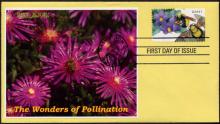The official British government position has been that the neonicotinoid insecticides are safe when used correctly – but Professor Robert Watson, the chief scientific adviser at the Department for Environment, Food and Rural Affairs (Defra), has now initiated his own inquiry, The Independent revealed, because of concerns about the alleged effects on bees. However, Defra denied this and states that Bob Watson did not order a government “review” of the safety of neonicotinoid pesticides. The decline in populations of bees and other pollinators remains a major concern, and he asked to receive regular updates on new research into the possible effects on insects which are not the target species of pesticides. Defra had considered all recent research on neonicotinoids, including an as yet unpublished study conducted by US Department of Agriculture researcher, Jeffrey Pettis and a second similar study by Cedric Allaux from the French National Institute for Agricultural Research, which suggested that the neonicotinoid insecticide, imidacloprid, made honey bees more susceptible to disease caused by a parasite, nosema. "We have concluded that the studies do not present any new evidence," the spokesman said. "The UK has a robust system for assessing risks from pesticides and all the evidence shows neonicotinoids do not pose an unacceptable risk when products are used correctly. We will not hesitate to act if presented with any new evidence."



